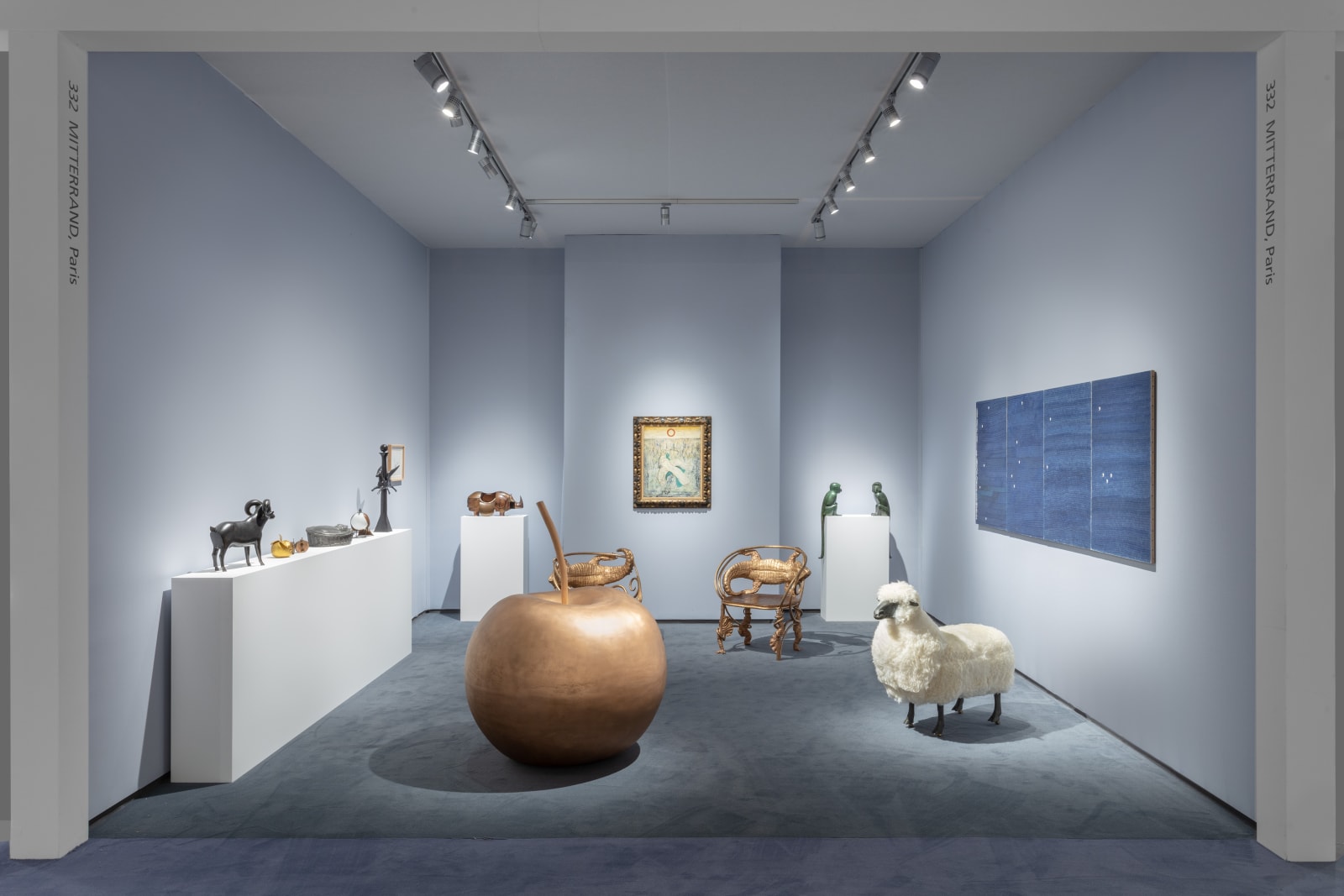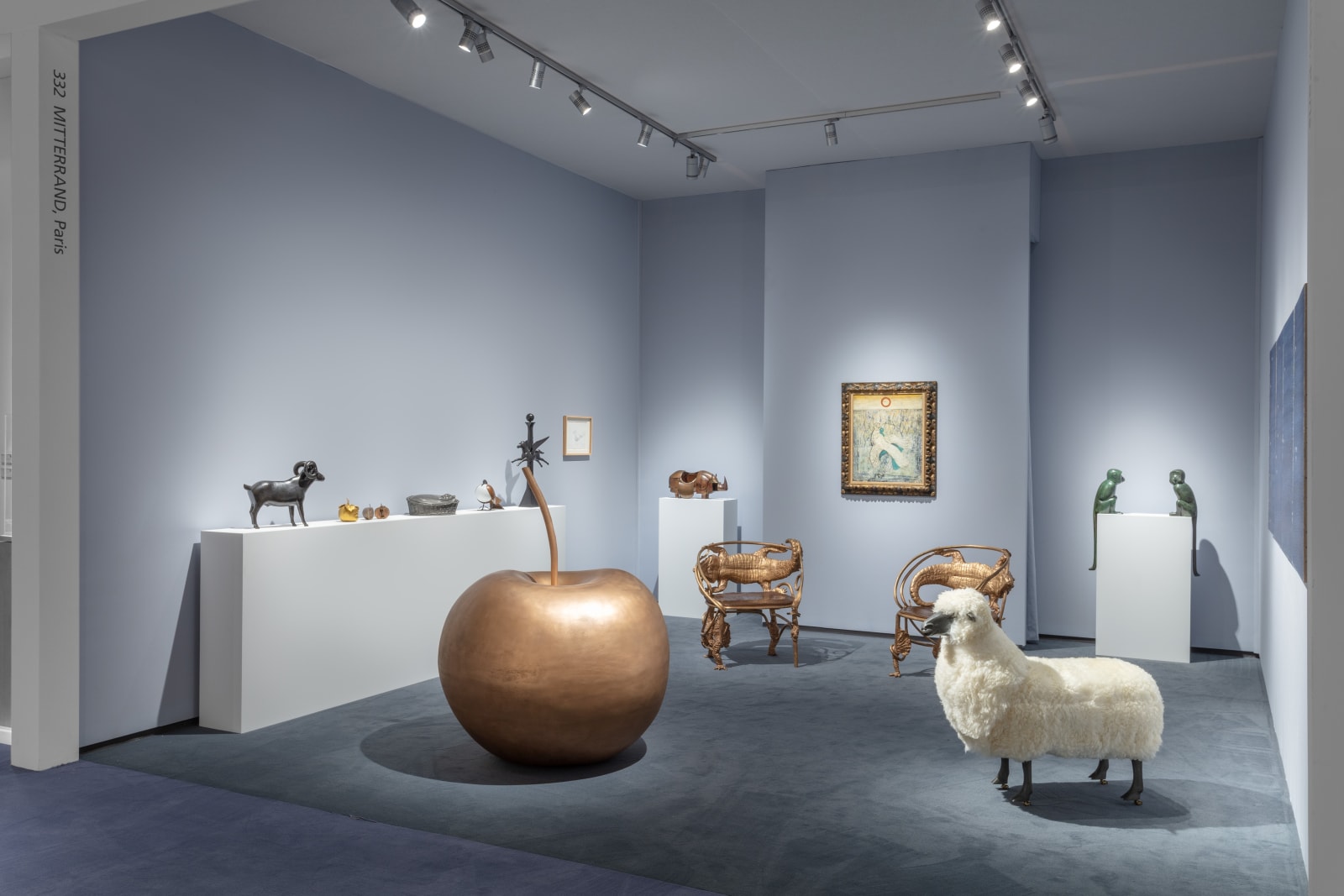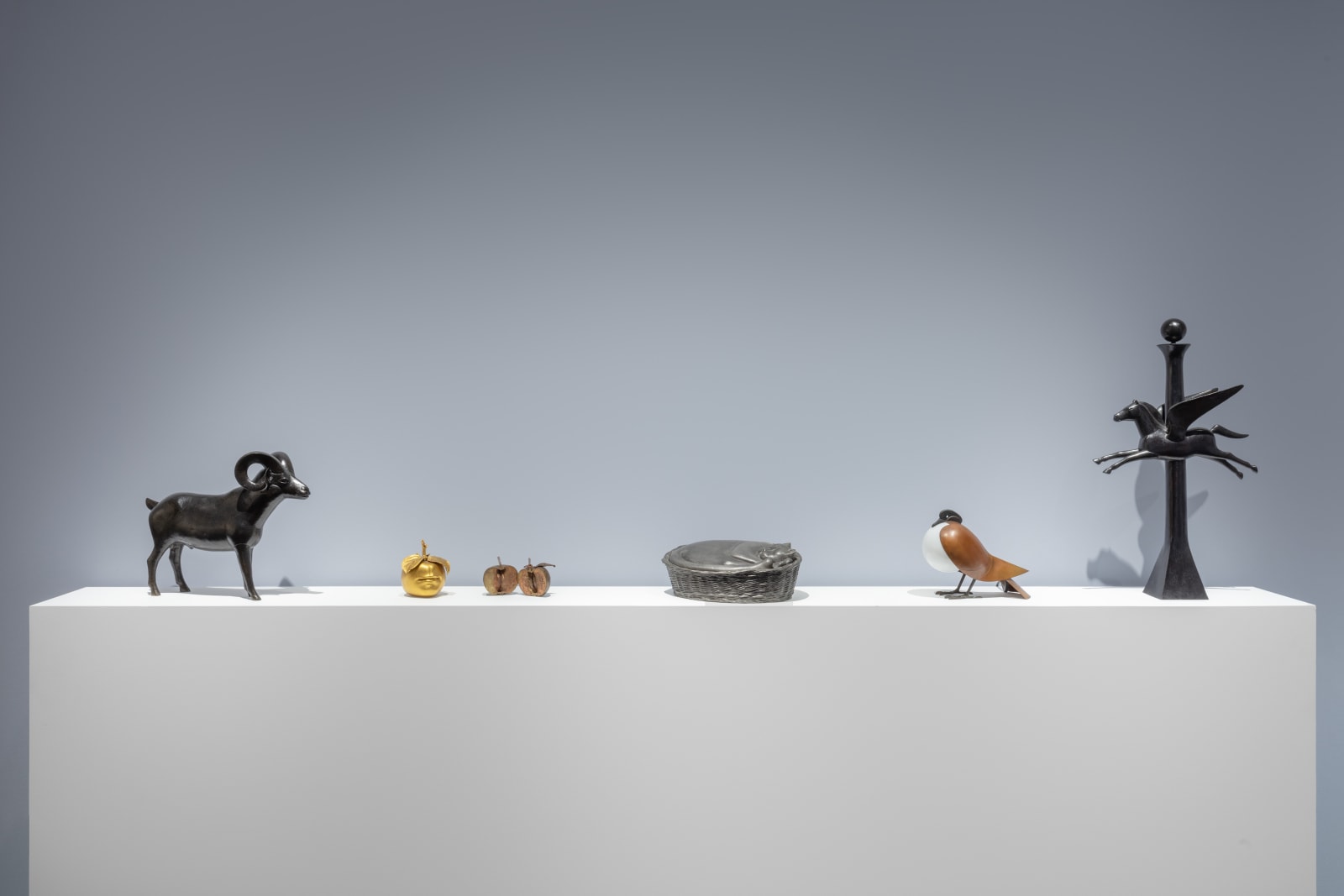TEFAF NEW YORK 2025
For its renewed participation at TEFAF New York, Mitterrand is pleased to present a selection of works by Claude and François-Xavier Lalanne, accompanied by Alighiero Boetti, Max Ernst and Andy Warhol.
Claude Lalanne's Pomme de Londres (2007) reflects the artist's poetic, surrealist spirit on a monumental scale. Lalanne found her inspiration in the gardens of the house she shared with her partner in Ury, near Paris. The apple is a recurring theme throughout the artist's career, from the life-size Pomme Bouche to the portable Pomme Bouche brooch, the Pomme-Montre that tells the time, the large-scale Pomme de Jardin Rouge and the bronze Pomme d'Hiver and Pomme de New York.
Still in Claude Lalanne's world, her Fauteuils Crocodile (2015) are part of her famous Croco furniture and one of the finest examples of the artist's surrealist creativity and audacity. For several decades, Claude Lalanne's work has reflected her taste for organic forms, the use of imprinting and the electroplating technique. She integrates the unique shape of the animal directly into her bronze work by molding real crocodile skins.
François-Xavier Lalanne began his rhinoceros series with his 1964 Rhinocrétaire desk/secretary. Numbers 2, 3 and 4 followed in 1966, 1975 and 1993 respectively, variants of one of his favorite animals have now found its way into the domestic world. In 1971, he created a leather rhinoceros that decomposed into armchairs. He also transposed this animal into smaller dimensions, with very rare versions featuring a mechanism. Such is the case of the Petit Rhinocéros Mécanique (1982) presented in New York this year.
François-Xavier Lalanne's Monkeys are indisputably one of the artist's most accomplished works. This pair of Singes Attentifs is a perfect synthesis of Lalanne's quest for perfection in drawing and his genius for form.
Alighiero Boetti's Senza Prima né Dopo (1991) belongs to his famous series of ballpoint pen drawings, produced between the early 1970s and the early 1990s. In this series, the artist uses the most banal of tools, the ballpoint pen, to construct complex visual and textual compositions. Executed by assistants, these works are not only time-consuming feats of manual labor, but also conceptual exercises that reflect Boetti's constant preoccupations with the structure of language, the poetics of time and the productive tensions between order and chance. Senza Prima né Dopo consists of four panels, all uniformly covered in dense blue hatching. The work is both visually immersive and intellectually layered, inviting viewers to engage with it over time, not only as an aesthetic field, but also as a semiotic puzzle.
Max Ernst's untitled painting (L'oiseau qui s'assisit et ne chante pas) (1926) was created at a time when the artist was moving away from the provocative nihilism of the Dada movement towards Surrealist principles. Using a combination of oil, sand and scraping, Ernst gives the canvas surface a raw, textured materiality. This unconventional approach is fully in line with the Surrealist approach, aimed at accessing deep psychic states through spontaneous means, free from rational constraints. The resulting strange, dreamlike atmosphere is in line with Breton's quest for “psychic automatism” - a notion he defined as the purest expression of the unconscious. At the center of the composition is a seated, mute bird figure that seems to embody Loplop, Ernst's recurring avian alter ego. Both a double of the artist and a narrative tool, this enigmatic character allows Ernst to explore, throughout his work, territories where myth, memory and metaphor merge.











